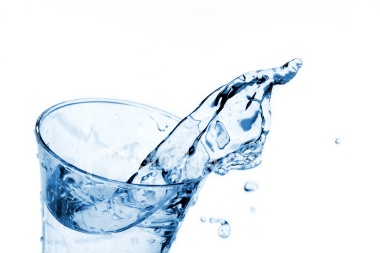|
Hydrogen From Water
Hydrogen from water may be extracted via a number of methods. These include biological production in an algae bioreactor, using electricity (by electrolysis), chemicals (by chemical reduction) or heat (by thermolysis). These methods of deriving hydrogen from water are less developed for bulk generation in comparison to the chemical methods used to attain hydrogen from hydrocarbons. 
Hundreds, if not thousands of hobbyists and independent investigators worldwide are working on various electrolysis-like projects which put out more energy than was required to run the electrolysis unit. These pursuits go by various names such as "Brown's gas" and "water fuel cells"; and have various heroes, such as the late Stanley Meyer, and more recently, John Kanzius, who is "burning" salt water using radio frequencies. A number of commercial interests are involved in the research and development of the various approaches as well. We explore the various methods of gaining hydrogen from water below. Biological Production Biological hydrogen can be produced in an algae bioreactor. In the late 1990s it was discovered that if the algae are deprived of sulfur it will switch from the production of oxygen, i.e. normal photosynthesis, to the production of hydrogen. Biological hydrogen can be and is produced in bioreactors that utilize feedstocks other than algae, the most common feedstock being waste streams. The process involves bacteria feeding on hydrocarbons and exhaling hydrogen and CO2. The CO2 can be sequestered successfully by several methods, leaving hydrogen gas. A prototype hydrogen bioreactor using waste as a feedstock is in operation at Welch's grape juice factory in North East, Pennsylvania. Electrolysis Hydrogen can also be produced through a direct chemical path using electrolysis. Coupled with a renewable electrical energy supply, such as hydropower, wind turbines, or photovoltaic cells, electrolysis of water allows the extraction of hydrogen from water without pollution. Usually, the electricity consumed is more valuable than the hydrogen produced so this method has not been widely used in the past.However the importance of high pressure electrolysis is increasing as human population and pollution increase. Electrolysis will become more economically competitive as non-renewable energy resources (carbon compounds) dwindle and as governments remove subsidies on carbon-based fuels. High Pressure Electrolysis High pressure electrolysis (HPE) is the decomposition of water into oxygen and hydrogen gas with a compressed hydrogen output of around 120–200 Bar (1740–2900 psi). By pressurising the hydrogen in the electrolyser the need for an external hydrogen compressor is eliminated. The average energy consumption for internal compression is around 3%. High Temperature Electrolysis When the energy supply is in the form of heat (solar thermal, or nuclear), the best path to hydrogen is through high-temperature electrolysis (HTE). In contrast with low-temperature electrolysis, HTE of water converts more of the initial heat energy into chemical energy (hydrogen), potentially doubling efficiency to about 50%. Because some of the energy in HTE is supplied in the form of heat, less of the energy must be converted twice (from heat to electricity, and then to chemical form), hence less energy is lost. HTE processes are generally only considered in combination with a nuclear heat source, because the other non-chemical form of high-temperature heat (concentrating solar thermal) is not consistent enough to bring down the capital costs of the HTE equipment. Research into HTE and high-temperature nuclear reactors may eventually lead to a hydrogen supply that is cost-competitive with natural gas steam reforming. HTE has been demonstrated in a laboratory, but not at a commercial scale. Nuclear Some prototype Generation IV reactors operate at 850 to 1000 degrees Celsius, considerably hotter than existing commercial nuclear power plants. General Atomics predicts that hydrogen produced in a High Temperature Gas Cooled Reactor (HTGR) would cost $1.53/kg. At 2005 gas prices, hydrogen cost $2.70/kg. Hence, just within the United States, a savings of tens of billions of dollars per year is possible with a nuclear-powered supply. Much of this savings would translate into reduced oil and natural gas imports. One side benefit of a nuclear reactor that produces both electricity and hydrogen is that it can shift production between the two. For instance, the plant might produce electricity during the day and hydrogen at night, matching its electrical generation profile to the daily variation in demand. If the hydrogen can be produced economically, this scheme would compete favorably with existing grid energy storage schemes. What is more, there is sufficient hydrogen demand in the United States that all daily peak generation could be handled by such plants. However, Generation IV reactors are not expected until 2030 and it is uncertain if they can compete by then in safety and supply with the distributed generation concept. Concentrating Solar Thermal The high temperatures necessary to split hydrogen from water can be achieved through the use of concentrating solar energy. Hydrosol II is a 100-kilowatt pilot plant at the Plataforma Solar de Almería in Spain which uses sunlight to obtain the required 800 to 1,200 °C to split water. Hydrosol II has been in operation since 2008. The design of this 100-kilowatt pilot plant is based on a modular concept. As a result, it may be possible that this technology could be readily scaled up to the megawatt range by multiplying the available reactor units and by connecting the plant to heliostat fields (fields of sun-tracking mirrors) of a suitable size. Chemical Production By using sodium hydroxide as a catalyst, aluminum and its alloys can react with water to generate hydrogen gas. Although other metals can perform the same reaction, aluminum is among the most promising materials for future development as it is safer and easier to transport than some other hydrogen from water catalyst materials like sodium borohydride. Photo Electrochemical Water Splitting Using electricity produced by photovoltaic systems offers us the cleanest way to produce hydrogen from water. Research aimed toward developing higher-efficiency multi-junction cell technology for production of hydrogen from water is underway by the photovoltaic industry.
Return From Hydrogen From Water To Home Page |





